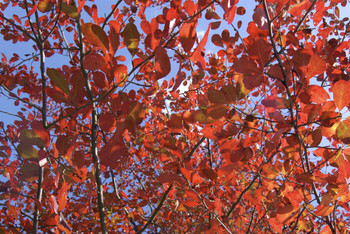

| HOME | ARTICLES | PHOTOGRAPHY | RESOURCES | DIRECTORY | SITE MAP |
wielding a vintagecamera
Many of us have gleefully rummaged through a grandparent's attic with an eye for lost treasure. The objects we found often brought the past to life. Now imagine an attic with more than five acres of floor space, crammed with treasures dating to millions of years in the past and replete with "crawl spaces" high enough for dinosaurs and mammoths to stand uptight. Beginning in 2003 the artist Justine Cooper was granted access to one of the great "attics" of the world: behind the scenes at the American Museum of Natural History in New York. The museum is the repository for a staggering 32 million-plus specimens and other objects, distributed throughout a mazelike warren of twenty-five buildings, with as many as eleven floors. Most items are stored in metal cabinets, some with multiple drawers, others adapted to the odd shapes of their occupants. But specimens also reside in glass jars of ethanol, in nitrogen-cooled stainless steel tanks, in freezer chambers--and even in the open, in offices and along corridors. (At any one time, less than 1 percent of the collection is on display in the public areas.)
For more than a year Cooper visited every department of the museum and shot more than a hundred images. Each image, focused razor-sharp, was recorded in detail on a four-by-five-inch negative. Cooper was drawn again and again to the drawers upon drawers of insects, which comprise more than 45 percent of all the items in the museum's collection. In addition to millions of insects pinned in drawers and millions more preserved in alcohol, the museum boasts an important research collection of insects fossilized in amber. Among the many naturalists whose collections made their way to the museum is that of the American zoologist Alfred C. Kinsey, best known for his pioneering studies of human sexuality; here resides his unparalleled trove of more than 5 million wasps and galls. Particularly fascinating for Cooper was that each grouping--luna moths pinned in neat rows, elephant skulls all in a line, a jumble of sharks in a jar of alcohol--was a constant reminder of nature's endless variation. Unlike your typical grandparents' cherished keepsakes, the items in the museum's collection--as in the collection of any natural history museum--were not stashed behind the scenes because they had outlived their usefulness. Quite the contrary. They serve as a library of life and nature from which humanity learns ever more about our world. |
Copyright 2025 Portrait Photography. All rights reserved.
|
 Cooper appropriated an item that was itself part of the collection, a 1910 Korona View camera, to recapture the treasures of the museum's storerooms and back-room cabinets. With it, she could offer the modern public at least a vicarious view of the museum's hidden wonders.
Cooper appropriated an item that was itself part of the collection, a 1910 Korona View camera, to recapture the treasures of the museum's storerooms and back-room cabinets. With it, she could offer the modern public at least a vicarious view of the museum's hidden wonders.